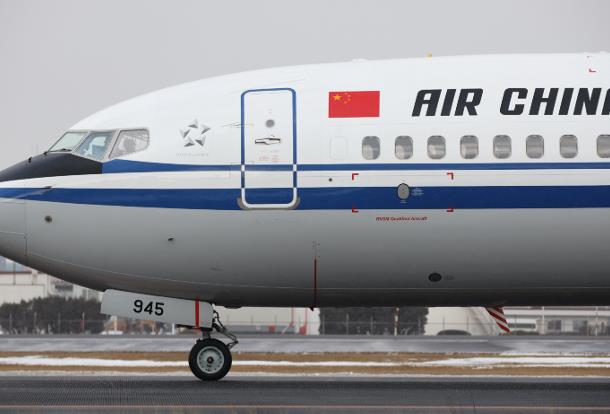ChinaTravelNews, Ritesh Gupta – It’s important for airlines to understand that adopting a retail mindset is not just for the e-commerce people, but for the whole organisation, asserts OpenJaw Technologies.
Carriers in China are increasingly looking at implementing a full-retailing capability. But such initiatives aren’t a one-off implementation, rather they are part of a transformational process that this industry is gradually nudging ahead to serve travellers in a seamless, contextual manner.
So, for example, if a traveller books an itinerary via 3rd party intermediary, and intends to check details pertaining to the in-flight meal on the day of travel, how can one do so? Would it be possible to access a photo or even a video via a preferred platform such as a chatbot or app? Can one book it after crossing the check-in and immigration area, just before the boarding the flight?
Airlines can’t afford to slip up in this area, considering the heavy use of mobile devices for various aspects of travel in China. As for mobile commerce here, if we just consider Ctrip, the mobile channel accounted for 71% of transactions in 2016.
So gearing up for shopping, transactions and servicing via mobile is of utmost important for airlines in China.
“Travel retailing for airlines means transforming a “traditional operator mindset” to a “retailer mindset”, which focuses more on knowing your customers and meeting as many of their end to end travel needs as possible rather than just operating flights carrying passengers from point to point,” asserts Liyan Zhao, VP China Operations, OpenJaw Technologies.

Liyan Zhao, VP China Operations, OpenJaw Technologies
Retail “mindset”
Airlines, as an industry, at large tend to be operationally process and cost-focused and not so much on their passengers from a retailing perspective.
More than technology being an issue, it is the approach of the organization that needs to be transformed.
“Technology platforms shouldn’t inhibit the way airlines intend to present themselves on any channel,” says Paul Byrne, SVP Development at OpenJaw Technologies. Technology can facilitate tailored, relevant merchandising offers in real-time like other digital retailers, he said. “Airlines can test, make merchandising offers, assess the conversion rate, plan for A/B and multi-variate testing, roll back initiatives if they aren’t successful,” said Byrne, referring to being in control and yet delivering sublime experiences across various touchpoints.

Paul Byrne, SVP Development at OpenJaw Technologies
Carriers in China are gradually embracing technology, and even realize that the whole organization, including senior management, needs to prepare for data-driven merchandising. For their part, the Dublin-based OpenJaw, in conjunction with TravelSky, recently signed four Chinese carriers for their t-Retail platform. Airlines are - Shenzhen Airlines, Sichuan Airlines, China United Airlines and Hong Kong Airlines.
“The preparedness for retail mindset varies across airlines, and also between departments within a single airline. It’s important to understand that adopting a retail mindset is not just for the e-commerce people, but for the whole organisation,” said Liyan. “What we often see in China is that e-Commerce department are the early adopters, however to operate like a full retailer, it requires collaboration with many other departments within the airline which sometimes is a challenge because legacy processes, systems, KPIs, etc.” The more successful transformation-led initiatives, and the ones that yield desired results, according to Liyan, are often the ones that were led by senior management, who could coordinate between departments, willing to optimise internal business processes, sometimes create new ones to operate as a real retailer. “The (relatively) smaller airlines are often more agile and flexible in adopting the retail mindset, leading to more effective execution. However bigger traditional airlines tend to have exclusive access to ancillary products/ inventories (e.g. group owned hotels) of their own, and have an upper hand in terms of differentiated product offerings.”
“Both types of airlines have their own advantages and disadvantages when it comes to travel retailing. The key really is to utilise your strength to the full, and mitigate your weakness through innovative thinking and the use of advanced technologies where appropriate,” said Liyan.
Being in control
If the whole organization works in a cohesive way, they can get closer to being in control of their own offers in an omni-channel shopping environment. Airlines in China are deploying merchandising rules that control their business model, and independently manage their own product propositions (inventory, availability, price, etc.).
Also, these initiatives aren’t just about higher margins only. They are about serving passengers’ needs and also being more proficient with distribution, including via indirect channels.
Data-driven merchandising: Airlines can not only enrich their air-related products, but also broaden their offerings into non-air space like hotels, car rentals, transfers, destination activities, etc. “Our roadmap (over the next 2-3 years) is use data better. As our team refines the machine learning algorithm (algorithm gets better at understanding the emanating on its own), merchandising rules would deliver better results – resulting in better metrics over a period of time,” said Byrne. As for how to improve upon KPIs such as average order value and customer experience, Byrne said dynamic pricing can pave way for better yield. Airlines have a lot of operational systems, for example, seat load factors by routes. So can such systems be fed into merchandising platforms to make offers that are dynamic, on real-time basis? Yes.
Distribution: Also, “being full travel retailers also help airlines to switch their focus from competing with other airlines on price, to compete on the level of understanding their consumers, diversified and differentiated product offerings, which ultimately will win back the online booking traffic that’s currently dominated by major OTAs in China,” said Liyan. “In China, almost 80% of the online travel booking are done through OTAs – “they own the customer and all the touch points”. The airline industry, in general, need to form strategies on winning these customers back. Innovative use of loyalty programs, diversified and differentiated product offerings, personalised offers driven by data insights all could play a role in this strategy,” he said.
Technology: Of course, airlines have to assess modularity (tailor the system according to their needs) and integration of their IT set up, for instance, modern merchandising and pricing engines do not operate independently. The underlying architecture to be flexible and extensible in order to support new products or services, in addition to leveraging new industry initiatives like NDC. Focus on open APIs, ensure architecture is easy to understand (pave way for flexibility in modifying systems) and open in terms of data access.
In a market like China where online indirect distribution isn’t just about OTAs and meta-search engines and one has to count on ecosystems like Alibaba, Baidu and Tencent, Liyan says online travel bookings through mobile have already surpassed web in China last year, becoming the major online channel. However some airlines still haven’t focused enough on mobile yet. “Most airlines see mobile still as an extension of their web presence, however it really should be the other way around. There are many opportunities for improvements in this space. Unifying user experience, product offering, profile and booking systems across all online channels (mobile and web) could be a start. Location-based services, especially at airports, in-flight could also be explored. As a flight operator, airlines could also turn many offline touch points throughout the physical customer journey into up/ cross selling and servicing opportunities through airline's mobile app, or WeChat’s mini-program,” concluded Liyan.




